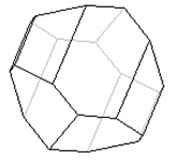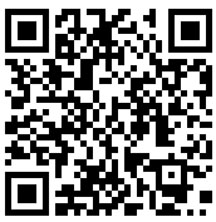

| Mineral Name | Augite |
| First Discovered | 1792 |
| Nickel-Strunz Classification | 09.DA.15 |
| Dana Classification | 65.01.03a.03 |
| ICSD | 9257 |
| Mineral Group | Silicates |


| Cleavage | Perfect |
| Colour(s) | Brown green, Light brown, Dark brown, Black |
| Specific Gravity | 3.40 |
| Diaphaneity | Translucent to Opaque |
| Fracture | Brittle - Conchoidal - Very brittle fracture producing small concoidal fragments |
| Mohs Hardness | 5.0 to 6.5 |
| Luminescence | Non-fluorescent |
| Luster | Vitreous to Resinous |
| Streak | Greenish gray |
| Habit(s) | Columnar to Granular to Massive |
| Radioactivity | Non-radioactive |
| Magnetism | Non-magnetic |

No known health risks have been associated with augite. However ingestion of augite, as with other naturally occurring minerals, is not recommended.

The following image shows the elemental breakdown of the mineral augite along with the mineral crystal structure.


| Crystal System | Monoclinic |  |
| Class | Prismatic | |
| Axial Ratios | a : b : c = 1.0888 : 1 : 0,5833 | |
| Morphology | Stubby prismatic crystals | |
| Optical Data Type | Biaxial (+) | |
| Pleochroism (x) | Pale green, Pale Brown, Green | |
| Pleochroism (y) | Pink, Yellowish green | |
| Pleochroism (z) | Pale green, Grayish green, Violet | |
| RL Values | nα = 1.680 - 1.735 nβ = 1.684 - 1.741 nγ = 1.706 - 1.774 |  |
| 2V | Measured: 40° to 52°, Calculated: 48° to 68° | |
| Max Birefringence | δ = 0.026 - 0.039 (See colour chart at right) | |
| Surface Relief | High | |
| Dispersion | Weak to Distinct r > v |

Augite can be referenced in certain current and historical texts under the following five names:
The mineral augite can be translated into the following select languages:
| Arabic | الأوجايت | Bulgarian | Chinese (Sim) | 普通辉石 | |
| Croatian | Augit | Czech | Augit | Danish | |
| Dutch | Augiet | Esperanto | Aŭgito | Estonian | |
| Finnish | Augiitti | French | German | Augit | |
| Greek | Hebrew | אוגיט | Hungarian | Augit | |
| Italian | Japanese | 普通輝石 | Korean | ||
| Latin | Lithuanian | Augitas | Norwegian | ||
| Persian | Polish | Augit | Portuguese | ||
| Romanian | Russian | Авгитт | Slovak | Augie | |
| Spanish | Augita | Swedish | Augit | Tagalog | |
| Turkish | Ukrainian | Авгіт | Vietnamese |

Augite can be found in many places around the world. The map below shows major documented concentrations of augite:


 |
The MIROFOSS database offers free printable geological identification tags for personal and non-profit use. These tags can be used to properly identify mineral samples in your collection. -Click here- to download a full size jpeg image for a augite identification tag; which can be printed on paper or used with a plastic laser printer. |
 |
What's this? What can I do with it? |

| Chemical Composition | Hurlbut, Cornelius S.; Klein, Cornelis, 1985, Manual of Mineralogy, 20th ed., ISBN 0-471-80580-7 |
| Crystallography | Robinson, P., Ross, M., Nord, G.L., Smyth, J.R., and Jaffe, H.W. (1977) Exsolution lamellae in augite and pigeonite: fossil indicators of lattice parameters at high temperature and pressure. American Mineralogist: 62: 857-873. |
| Optical Data | Phillips, W.R. and D.T. Griffin (1981) Optical Mineralogy: 196-198. |
| History | Deer, Howie, and Zussmann (1997): 2A: 294-398. |
| Geographical Data | Mindat.org. Retrieved on 2012-02-01 |
| Physical Identification | Webmineral.com. Retrieved on 2012-02-01. |
| February 02, 2012 | The last time this page was updated |
| ©2017 MIROFOSS™ Foundation | |
 |